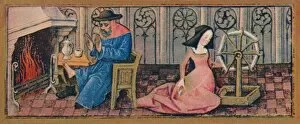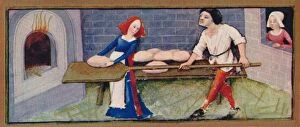Count Of Angouleme Collection
"Count of Angouleme: A Glimpse into 15th Century Life" Step back in time to the enchanting world of the Count of Angouleme
All Professionally Made to Order for Quick Shipping
"Count of Angouleme: A Glimpse into 15th Century Life" Step back in time to the enchanting world of the Count of Angouleme, as depicted by Robinet Testard in his remarkable illustrations from 1939. In October, witness the rustic charm of peasants feeding their pigs on acorns, a testament to their resourcefulness and connection with nature. Moving forward to September, we encounter an ill-matched couple whose differences are beautifully captured by Testard's skilled hand. Their contrasting personalities bring forth a sense of intrigue and curiosity about their story. July brings us to the fields where hardworking farmers engage in threshing activities. The laborious task is portrayed with utmost detail, showcasing the dedication and perseverance required for agricultural success during this era. March transports us to vineyards bustling with activity as workers diligently tend to grapevines. This depiction highlights the importance of viticulture in shaping regional economies and traditions during that period. In February, spinning takes center stage as women skillfully transform fibers into thread. This portrayal sheds light on an essential craft that played a significant role in textile production at the time. June unveils scenes of mowing, revealing how agriculture was not limited solely to crops but also encompassed animal husbandry practices such as tending livestock grazing on lush meadows. April offers glimpses into romantic encounters within idyllic gardens—a reminder that love has always flourished amidst natural beauty throughout history. December showcases bakers busy creating mouthwatering delights while evoking feelings of warmth and joy associated with festive celebrations during winter months. November presents a vivid image depicting pig slaughtering—an integral part of rural life necessary for sustenance during colder seasons when food preservation was paramount. August introduces us to an old woman being transported in a wheelbarrow—a whimsical scene that sparks curiosity about her journey or purpose within this medieval landscape.











